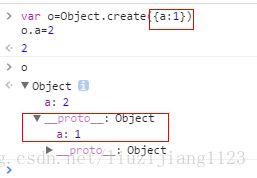- 2024前端面试准备之uniapp篇
前端fighter
前端面试uni-app
全文链接!!!!!!!1.UniApp和其他跨平台框架(如ReactNative、Flutter)有什么区别?语言和技术栈:UniApp使用Vue.js作为开发语言和技术栈,而ReactNative使用React.js,Flutter使用Dart语言。开发者可以根据自己的技术背景和偏好选择合适的框架。性能和体验:UniApp的性能和用户体验相对较好,因为它使用原生渲染技术,可以实现更接近原生应用的
- 2024前端面试准备之微信小程序篇
前端fighter
前端微信小程序小程序
全文链接!!!!!!1.微信小程序生命周期1.onLaunch:小程序初始化完成时触发,全局只触发一次2.onShow:小程序启动或从后台进入前台时触发3.onHide:小程序从前台进入后台时触发4.onError:小程序发生错误时触发5.onPageNotFound:页面不存在时触发6.onLoad:页面加载时触发7.onShow:页面显示时触发8.onReady:页面初次渲染完成时触发9.on
- 2024前端面试准备之CSS篇(一)
前端fighter
前端css面试css3html5
全文链接1.CSS选择器的优先级是怎样的CSS选择器的优先级是:内联>ID选择器>类选择器>标签选择器计算示例:优先级由A、B、C、D的值来决定的,其中它们的值计算规则如下:A的值等于1的前提是存在内联样式,否则A=0B的值等于ID选择器出现的次数C的值等于类选择器和属性选择器和伪类出现的总次数D的值等于标签选择器和伪元素出现的总次数2.link和@import的区别link属于XHTML标签,⽽
- 2024前端面试准备之HTML篇
前端fighter
前端面试html
全文链接1.doctype的作用是什么DOCTYPE是html5标准网页声明,且必须声明在HTML⽂档的第⼀⾏。来告知浏览器的解析器⽤什么⽂档标准解析这个⽂档,不同的渲染模式会影响到浏览器对于CSS代码甚⾄JavaScript脚本的解析⽂档解析类型有:BackCompat:怪异模式,浏览器使⽤⾃⼰的怪异模式解析渲染⻚⾯。(如果没有声明DOCTYPE,默认就是这个模式)CSS1Compat:标准模式
- 2024前端面试准备之Vue3篇
前端fighter
前端面试职场和发展
全文链接!!!!!!1.Vue3相比Vue2有哪些改进?CompositionAPI:Vue3引入了CompositionAPI,使得组件的逻辑更加清晰和灵活。开发者可以根据功能逻辑将代码按照功能进行组织,而不是按照选项的方式。更快的渲染性能:Vue3使用了Proxy代理对象来实现数据的响应式,相比Vue2的Object.defineProperty,性能更高效。Tree-shaking支持:Vu
- 2024前端面试准备之TypeScript篇(二)
前端fighter
前端typescriptlinux
全文链接1.TypeScript中的装饰器是什么以及如何使用装饰器是一种特殊的函数,用于修改或增强其他函数的功能。在TypeScript中,装饰器可以用于类、方法、属性和参数上。装饰器使用特殊的语法符号@,后跟一个装饰器函数。装饰器函数可以接收不同的参数,具体取决于装饰器的类型。以下是一些常见的装饰器用法:类装饰器:用于修改或增强类的行为。可以在类定义之前使用@符号,后跟一个装饰器函数。装饰器函数
- 2024前端面试准备之TypeScript篇(一)
前端fighter
前端面试typescript
全文链接1.什么是TypeScriptTypeScript是一种开源的编程语言,是JavaScript的一个超集。它添加了静态类型、类、接口和模块等特性,使得开发者能够更好地组织和维护大型应用程序。TypeScript代码可以被编译成JavaScript,从而可以在任何支持JavaScript的环境中运行。2.如何在项目中使用TypeScript安装TypeScript:首先,在项目的根目录中安装
- 2024前端面试准备之CSS篇(二)
前端fighter
前端cssjavascript
全文链接1.什么是伪类和伪元素伪类(Pseudo-class):伪类是选择器的一种,用于选择特定状态或条件下的元素。它们以冒号(:)开头,用于向选择器添加额外的特定条件。例如,:hover伪类用于选择鼠标悬停在元素上的状态,:nth-child(n)伪类用于选择父元素下的第n个子元素等。伪元素(Pseudo-element):伪元素是选择器的一种,用于在元素的特定部分上添加样式。它们以双冒号(::
- 前端面试题-收集
i小杨
前端面试职场和发展
前言写这篇文章的主要目的是为了,自己可以更方便、快速的找到自己比较喜欢的文章;如果可以给其他人带来方便也是一件好事儿,如果对原作者带来了不方便,联系我删除;前端面试题vue这一块儿拿捏了@一尾流莺中小型公司面试时都会问些什么?@一尾流莺2021年我的前端面试准备@伊人a想进互联网大公司,这些题你总得会把。@晟小明大厂面试题大前端面试宝典前端面试指南前端学习笔记Awesome前端面试总结前端面试题详
- 前端面试准备大纲
划船不靠浆,
面试类前端面试大纲面试
前端面试一面1、面试小技巧,页面布局2、HTTP协议3、css盒模型,DOM事件4、js基础、原型链5、面向对象、通信6、安全、算法二面1、渲染机制2、js运行机制3、页面性能、优化4、常用框架、对其了解程度5、安全、算法三面1、业务能力、自己做过的项目描述2、团队协作能力3、带人能力
- 前端面试准备学习记录 — JS篇(持续更新中)
I will.874
前端面试学习
三、JS一、JS数据类型1.1、JS数据类型八种类型:undefined、null、boolean、number、string、object、symbol(ES6)、bigint(ES6)栈:基本数据类型(undefined、null、boolean、number、string)开辟新内存堆:引用类型数组(对象、数组、函数)浅拷贝,内存地址不变两者存储位置不同:基本数据类型:存储在栈中,占据空间小
- 前端面试准备学习记录 — HTML篇
I will.874
前端学习html
HTML篇href会异步加载css,而@import会在页面加载完成后才开始加载,会出现页面初始无样式也就是白屏问题。使用src引入文件时,浏览器会先暂停其他资源的下载和处理,直到将该资源加载、编译、执行完毕src同步加载执行,href异步加载执行语义化的优点,对机器友好、有利于SEO(搜索引擎优化)DOCTYPE(文档类型)的作用:告诉浏览器应该以什么样的(HTML、xhtml)文档类型来定义解
- 前端面试准备学习记录 — CSS篇
I will.874
前端学习css
2.1、CSS基础选择器:id>类=属性=伪类>标签优先级:内联样式>id>类、伪类、属性>标签!important优先级最高block:独占一行;inline:width、height属性无效,水平方向的margin和padding有效;inline—block:将对象设置为inline对象,对象内容作为block对象呈现,之后的内联对象会被排列在同一行内隐藏元素的方法:display:none
- 2022前端面试大全(不断更新)
Mr.Meng_95
vueleetcode算法前端vue.js排序算法
前端面试题1.史上最全前端开发面试问题及答案整理2.2年前端(外包经历)6月部分面试记录(高级、资深岗位)3.三十七个常见Vue面试题,背就完事了4.看过100份前端简历之后,汇总一下常见的问题5.2021年我的前端面试准备6.最新的前端大厂面经(详解答案)7.2022年最新前端面试题8.面试题:你能写一个Vue的双向数据绑定吗?9.2022年最新前端面试题0210.【面试篇】寒冬求职季之你必须要
- 前端面试准备
Allennnnnnn
手写call、applyhttps://github.com/mqyqingfeng/Blog/issues/11Function.prototype.myCall=function(thisTarger){varthisTarget=thisTarget||windowthisTarger.f=thisargs=[]for(vari=1;i{if(XMLHttpRequest){returnne
- 前端面试准备小结
luna0607
前端方面:1.callapplybind的区别2.如何居中一个元素(block元素如何,inline元素又如何)3.script文件异步加载的5种办法4.ES6的新特性1)let2)新增了块级作用域3)promise(实现原理和主要api)5.js原型链6.HTTP头部有什么字段,代表什么含义7.浏览器缓存的过程8.HTTP1.0、HTTP1.1、HTTP2的区别9.跨域的解决方式:CROS(两次
- 前端面试准备--手写代码--防抖和节流
Planetlll_hh
前端面试--手写代码前端javascript
1、防抖(debounce)目的:避免用户多次触发事件,导致事件处理程序响应过快而产生抖动感。实现方法:触发事件时,利用定时器让事件处理程序在一段时间后执行。与此同时,在事件处理程序前若再次触发事件,则取消前一次的定时任务。实现代码Document//output是业务处理函数functionoutput(){console.log(this.value);}//这里的具体应用场景是防止用户输入文
- 前端面试准备
姜酱i
1.letconst1.块级作用域2.const生成的常量不能修改,(引用类型除外)3.不存在变量提升,所以不能提前使用。4.不能重复命名2.解构赋值leta=1,letb=2let[a,b]=[b,a]3.set,map数据结构1.set:存储不同成员的集合(常用来数组去重)2.map:键名是任何类型的键值对结构4.symbol:独一无二的值5.proxy:拦截对象,重写对象的一些属性和方法6.
- 2022前端面试准备(一)(vue篇)
安小落_bc30
vue双向绑定vue2.0vue双向绑定主要是在observer(数据监听器)中通过Object.defineProperty()达到数据劫持,代理艘由数觉得getter和setter,当数据变化时,会触发setter,通过Def通知watcher,watcher是observer和compile的中间桥梁,当observer监听到数据变化时,通过updater停止compile更新视图;comp
- 2022年前端面试题整理,持续更新中
zh阿飞
面试前端html5javascriptvue.jscss3
前端面试题整理已同步到掘金,掘金地址:https://juejin.cn/post/7075332630417244173个人整理了很多网上常见的面试题,希望也能通过这来复习内容有点多,可能CSDN上预览效果不好,想要markdown文档的可以私信我,推荐使用Typora看比较好的面试题2021年我的前端面试准备2021年前端面试必读文章【超三百篇文章/赠复习导图】CSS、HTML你是怎么理解HT
- 前端面试准备--7.通信类
飞菲fly
1.什么是同源策略及限制1.同源策略限制从一个源加载的文档或脚本与来自另一个源的资源进行交互。(这是一个用于隔离潜在恶意文件的关键的安全机制。)2.一个源包括:协议、域名、端口(这三个有一个不一样就是源不一样,就是我们所说的跨域了)http://协议www.xxx.com域名没指名端口默认803.限制:不是一个源的文档没有权利去操作另一个源的文档;主要限制在几个方面:Cookie、LocalSto
- 前端面试准备之——CSS篇
Amor_Hy
1、元素定位有哪些?absolute以第一个不是以static定位的父元素进行定位fixed以浏览器窗口进行定位relative相对于其正常定位进行定位static默认定位,元素出现在正常的文档流中2、CSS的选择符有哪些?优先级算法怎么定义?id选择器#id类选择器#class伪类选择器#id:after标签选择器div相邻选择器div+p(同级兄弟元素)子代选择器div>p后代选择器divp通
- 前端面试准备--12.错误监控类
飞菲fly
*如何保证产品质量?1.前端错误的分类2.错误的捕获方式3.上报错误的基本原理一、前端错误的分类1.即时运行错误:代码错误*try…catch(需要把try...catch布到代码中)*window.onerror(dom0)只能捕获即时运行错误2.资源加载错误:(js、css、图片加载失败)*object.onerror(通过节点绑onerror事件,捕获加载错误;)*performance.g
- CSS-两栏布局
AlbertZX
css
布局是面试中和实际开发中经常遇到的问题,常见的有两栏布局、三栏布局等。想起来之前的一次某团的面试,要求用尽可能多的方法实现左侧固定宽度、右侧自适应的两栏布局,现整理一份最常见的实现两栏布局的几种方法,简单易懂,可作为前端面试准备资料。0.HTML结构如下:1.利用浮动float.main{overflow:hidden;}.left{/*左栏设置左浮动*/float:left;width:400p
- CSS-两栏布局
AlbertZX
css
布局是面试中和实际开发中经常遇到的问题,常见的有两栏布局、三栏布局等。想起来之前的一次某团的面试,要求用尽可能多的方法实现左侧固定宽度、右侧自适应的两栏布局,现整理一份最常见的实现两栏布局的几种方法,简单易懂,可作为前端面试准备资料。0.HTML结构如下:1.利用浮动float.main{overflow:hidden;}.left{/*左栏设置左浮动*/float:left;width:400p
- JavaScript-数组去重
AlbertZX
javascript
数组是JavaScript中最常见的一种数据结构,数组去重在开发过程中和面试过程中都会经常遇到,现整理了一些用于数组去重的方法,可以用于前端面试准备材料。〇、先准备一个数组letarr=[1,2,3,4,5,3,2,1,'','','1',{},{},null,null,NaN,NaN,undefined,undefined]一、ES6中的Set结构letarr1=[...newSet(arr)]
- CSS-水平垂直居中
AlbertZX
css
要论在前端面试中CSS常考的题目,水平垂直居中一定有姓名。如果是平时不注意写样式的初学者,这道看似简单的问题也不是很容易回答,现整理了一下CSS水平垂直居中的方法,可作为前端面试准备资料。要想做水平垂直居中,我们先准备两个盒子,大盒子里面套一个小盒子,这个时候我们要想,套在里面的要做水平垂直居中的小盒子的宽高我们知道吗?宽高知道或者不知道,做水平垂直居中的方法一样吗?答案是不一样的,下面就要分情况
- JavaScript-浅谈继承
AlbertZX
javascript
作为面向对象语言大军中的一员,javascript的继承问题也会经常出现在前端面试中,很多小伙伴都折在这个问题上,今天为各位小伙伴们整理了js中的6种继承,并指出它们各自最核心的特点,可作为前端面试准备资料。一、原型链继承1、核心:将父类的实例作为子类的原型。2、代码:functionFather1(){this.name='baba';}Father1.prototype.getName=fun
- JavaScript-判断数据类型
AlbertZX
javascript
在ES5的时候,数据类型有6种:Number、String、Boolean、undefined、object、Null。ES6中新增了一种Symbol,表示独一无二的值。JS中该如何判断数据属于哪种数据类型呢?现整理了四种判断方法,可用作前端面试准备材料。1、typeoftypeof是一个操作符,右侧跟一个一元表达式,返回这个表达式的数据类型,以字符串的形式表示。console.log(typeo
- 前端面试准备--9.算法类
飞菲fly
1.排序(!)冒泡排序快速排序(!)https://segmentfault.com/a/1190000009426421选择排序(!)https://segmentfault.com/a/1190000009366805希尔排序(!)https://segmentfault.com/a/11900000094618322.堆栈(!)、队列、链表--JS数组本身就是具备堆栈,队列的特性;pop、p
- jsonp 常用util方法
hw1287789687
jsonpjsonp常用方法jsonp callback
jsonp 常用java方法
(1)以jsonp的形式返回:函数名(json字符串)
/***
* 用于jsonp调用
* @param map : 用于构造json数据
* @param callback : 回调的javascript方法名
* @param filters : <code>SimpleBeanPropertyFilter theFilt
- 多线程场景
alafqq
多线程
0
能不能简单描述一下你在java web开发中需要用到多线程编程的场景?0
对多线程有些了解,但是不太清楚具体的应用场景,能简单说一下你遇到的多线程编程的场景吗?
Java多线程
2012年11月23日 15:41 Young9007 Young9007
4
0 0 4
Comment添加评论关注(2)
3个答案 按时间排序 按投票排序
0
0
最典型的如:
1、
- Maven学习——修改Maven的本地仓库路径
Kai_Ge
maven
安装Maven后我们会在用户目录下发现.m2 文件夹。默认情况下,该文件夹下放置了Maven本地仓库.m2/repository。所有的Maven构件(artifact)都被存储到该仓库中,以方便重用。但是windows用户的操作系统都安装在C盘,把Maven仓库放到C盘是很危险的,为此我们需要修改Maven的本地仓库路径。
- placeholder的浏览器兼容
120153216
placeholder
【前言】
自从html5引入placeholder后,问题就来了,
不支持html5的浏览器也先有这样的效果,
各种兼容,之前考虑,今天测试人员逮住不放,
想了个解决办法,看样子还行,记录一下。
【原理】
不使用placeholder,而是模拟placeholder的效果,
大概就是用focus和focusout效果。
【代码】
<scrip
- debian_用iso文件创建本地apt源
2002wmj
Debian
1.将N个debian-506-amd64-DVD-N.iso存放于本地或其他媒介内,本例是放在本机/iso/目录下
2.创建N个挂载点目录
如下:
debian:~#mkdir –r /media/dvd1
debian:~#mkdir –r /media/dvd2
debian:~#mkdir –r /media/dvd3
….
debian:~#mkdir –r /media
- SQLSERVER耗时最长的SQL
357029540
SQL Server
对于DBA来说,经常要知道存储过程的某些信息:
1. 执行了多少次
2. 执行的执行计划如何
3. 执行的平均读写如何
4. 执行平均需要多少时间
列名 &
- com/genuitec/eclipse/j2eedt/core/J2EEProjectUtil
7454103
eclipse
今天eclipse突然报了com/genuitec/eclipse/j2eedt/core/J2EEProjectUtil 错误,并且工程文件打不开了,在网上找了一下资料,然后按照方法操作了一遍,好了,解决方法如下:
错误提示信息:
An error has occurred.See error log for more details.
Reason:
com/genuitec/
- 用正则删除文本中的html标签
adminjun
javahtml正则表达式去掉html标签
使用文本编辑器录入文章存入数据中的文本是HTML标签格式,由于业务需要对HTML标签进行去除只保留纯净的文本内容,于是乎Java实现自动过滤。
如下:
public static String Html2Text(String inputString) {
String htmlStr = inputString; // 含html标签的字符串
String textSt
- 嵌入式系统设计中常用总线和接口
aijuans
linux 基础
嵌入式系统设计中常用总线和接口
任何一个微处理器都要与一定数量的部件和外围设备连接,但如果将各部件和每一种外围设备都分别用一组线路与CPU直接连接,那么连线
- Java函数调用方式——按值传递
ayaoxinchao
java按值传递对象基础数据类型
Java使用按值传递的函数调用方式,这往往使我感到迷惑。因为在基础数据类型和对象的传递上,我就会纠结于到底是按值传递,还是按引用传递。其实经过学习,Java在任何地方,都一直发挥着按值传递的本色。
首先,让我们看一看基础数据类型是如何按值传递的。
public static void main(String[] args) {
int a = 2;
- ios音量线性下降
bewithme
ios音量
直接上代码吧
//second 几秒内下降为0
- (void)reduceVolume:(int)second {
KGVoicePlayer *player = [KGVoicePlayer defaultPlayer];
if (!_flag) {
_tempVolume = player.volume;
- 与其怨它不如爱它
bijian1013
选择理想职业规划
抱怨工作是年轻人的常态,但爱工作才是积极的心态,与其怨它不如爱它。
一般来说,在公司干了一两年后,不少年轻人容易产生怨言,除了具体的埋怨公司“扭门”,埋怨上司无能以外,也有许多人是因为根本不爱自已的那份工作,工作完全成了谋生的手段,跟自已的性格、专业、爱好都相差甚远。
- 一边时间不够用一边浪费时间
bingyingao
工作时间浪费
一方面感觉时间严重不够用,另一方面又在不停的浪费时间。
每一个周末,晚上熬夜看电影到凌晨一点,早上起不来一直睡到10点钟,10点钟起床,吃饭后玩手机到下午一点。
精神还是很差,下午像一直野鬼在城市里晃荡。
为何不尝试晚上10点钟就睡,早上7点就起,时间完全是一样的,把看电影的时间换到早上,精神好,气色好,一天好状态。
控制让自己周末早睡早起,你就成功了一半。
有多少个工作
- 【Scala八】Scala核心二:隐式转换
bit1129
scala
Implicits work like this: if you call a method on a Scala object, and the Scala compiler does not see a definition for that method in the class definition for that object, the compiler will try to con
- sudoku slover in Haskell (2)
bookjovi
haskellsudoku
继续精简haskell版的sudoku程序,稍微改了一下,这次用了8行,同时性能也提高了很多,对每个空格的所有解不是通过尝试算出来的,而是直接得出。
board = [0,3,4,1,7,0,5,0,0,
0,6,0,0,0,8,3,0,1,
7,0,0,3,0,0,0,0,6,
5,0,0,6,4,0,8,0,7,
- Java-Collections Framework学习与总结-HashSet和LinkedHashSet
BrokenDreams
linkedhashset
本篇总结一下两个常用的集合类HashSet和LinkedHashSet。
它们都实现了相同接口java.util.Set。Set表示一种元素无序且不可重复的集合;之前总结过的java.util.List表示一种元素可重复且有序
- 读《研磨设计模式》-代码笔记-备忘录模式-Memento
bylijinnan
java设计模式
声明: 本文只为方便我个人查阅和理解,详细的分析以及源代码请移步 原作者的博客http://chjavach.iteye.com/
import java.util.ArrayList;
import java.util.List;
/*
* 备忘录模式的功能是,在不破坏封装性的前提下,捕获一个对象的内部状态,并在对象之外保存这个状态,为以后的状态恢复作“备忘”
- 《RAW格式照片处理专业技法》笔记
cherishLC
PS
注意,这不是教程!仅记录楼主之前不太了解的
一、色彩(空间)管理
作者建议采用ProRGB(色域最广),但camera raw中设为ProRGB,而PS中则在ProRGB的基础上,将gamma值设为了1.8(更符合人眼)
注意:bridge、camera raw怎么设置显示、输出的颜色都是正确的(会读取文件内的颜色配置文件),但用PS输出jpg文件时,必须先用Edit->conv
- 使用 Git 下载 Spring 源码 编译 for Eclipse
crabdave
eclipse
使用 Git 下载 Spring 源码 编译 for Eclipse
1、安装gradle,下载 http://www.gradle.org/downloads
配置环境变量GRADLE_HOME,配置PATH %GRADLE_HOME%/bin,cmd,gradle -v
2、spring4 用jdk8 下载 https://jdk8.java.
- mysql连接拒绝问题
daizj
mysql登录权限
mysql中在其它机器连接mysql服务器时报错问题汇总
一、[running]
[email protected]:~$mysql -uroot -h 192.168.9.108 -p //带-p参数,在下一步进行密码输入
Enter password: //无字符串输入
ERROR 1045 (28000): Access
- Google Chrome 为何打压 H.264
dsjt
applehtml5chromeGoogle
Google 今天在 Chromium 官方博客宣布由于 H.264 编解码器并非开放标准,Chrome 将在几个月后正式停止对 H.264 视频解码的支持,全面采用开放的 WebM 和 Theora 格式。
Google 在博客上表示,自从 WebM 视频编解码器推出以后,在性能、厂商支持以及独立性方面已经取得了很大的进步,为了与 Chromium 现有支持的編解码器保持一致,Chrome
- yii 获取控制器名 和方法名
dcj3sjt126com
yiiframework
1. 获取控制器名
在控制器中获取控制器名: $name = $this->getId();
在视图中获取控制器名: $name = Yii::app()->controller->id;
2. 获取动作名
在控制器beforeAction()回调函数中获取动作名: $name =
- Android知识总结(二)
come_for_dream
android
明天要考试了,速速总结如下
1、Activity的启动模式
standard:每次调用Activity的时候都创建一个(可以有多个相同的实例,也允许多个相同Activity叠加。)
singleTop:可以有多个实例,但是不允许多个相同Activity叠加。即,如果Ac
- 高洛峰收徒第二期:寻找未来的“技术大牛” ——折腾一年,奖励20万元
gcq511120594
工作项目管理
高洛峰,兄弟连IT教育合伙人、猿代码创始人、PHP培训第一人、《细说PHP》作者、软件开发工程师、《IT峰播》主创人、PHP讲师的鼻祖!
首期现在的进程刚刚过半,徒弟们真的很棒,人品都没的说,团结互助,学习刻苦,工作认真积极,灵活上进。我几乎会把他们全部留下来,现在已有一多半安排了实际的工作,并取得了很好的成绩。等他们出徒之日,凭他们的能力一定能够拿到高薪,而且我还承诺过一个徒弟,当他拿到大学毕
- linux expect
heipark
expect
1. 创建、编辑文件go.sh
#!/usr/bin/expect
spawn sudo su admin
expect "*password*" { send "13456\r\n" }
interact
2. 设置权限
chmod u+x go.sh 3.
- Spring4.1新特性——静态资源处理增强
jinnianshilongnian
spring 4.1
目录
Spring4.1新特性——综述
Spring4.1新特性——Spring核心部分及其他
Spring4.1新特性——Spring缓存框架增强
Spring4.1新特性——异步调用和事件机制的异常处理
Spring4.1新特性——数据库集成测试脚本初始化
Spring4.1新特性——Spring MVC增强
Spring4.1新特性——页面自动化测试框架Spring MVC T
- idea ubuntuxia 乱码
liyonghui160com
1.首先需要在windows字体目录下或者其它地方找到simsun.ttf 这个 字体文件。
2.在ubuntu 下可以执行下面操作安装该字体:
sudo mkdir /usr/share/fonts/truetype/simsun
sudo cp simsun.ttf /usr/share/fonts/truetype/simsun
fc-cache -f -v
- 改良程序的11技巧
pda158
技巧
有很多理由都能说明为什么我们应该写出清晰、可读性好的程序。最重要的一点,程序你只写一次,但以后会无数次的阅读。当你第二天回头来看你的代码 时,你就要开始阅读它了。当你把代码拿给其他人看时,他必须阅读你的代码。因此,在编写时多花一点时间,你会在阅读它时节省大量的时间。
让我们看一些基本的编程技巧:
尽量保持方法简短
永远永远不要把同一个变量用于多个不同的
- 300个涵盖IT各方面的免费资源(下)——工作与学习篇
shoothao
创业免费资源学习课程远程工作
工作与生产效率:
A. 背景声音
Noisli:背景噪音与颜色生成器。
Noizio:环境声均衡器。
Defonic:世界上任何的声响都可混合成美丽的旋律。
Designers.mx:设计者为设计者所准备的播放列表。
Coffitivity:这里的声音就像咖啡馆里放的一样。
B. 避免注意力分散
Self Co
- 深入浅出RPC
uule
rpc
深入浅出RPC-浅出篇
深入浅出RPC-深入篇
RPC
Remote Procedure Call Protocol
远程过程调用协议
它是一种通过网络从远程计算机程序上请求服务,而不需要了解底层网络技术的协议。RPC协议假定某些传输协议的存在,如TCP或UDP,为通信程序之间携带信息数据。在OSI网络通信模型中,RPC跨越了传输层和应用层。RPC使得开发
